Bachelor Kimchi (Ponytail Radish Kimchi)
Bachelor kimchi is a popular radish kimchi made with Ponytail radish. It retains its crunchiness even after the long fermentation. This mild radish kimchi is fun to make and delicious to eat! I believe everyone should make this at least once.
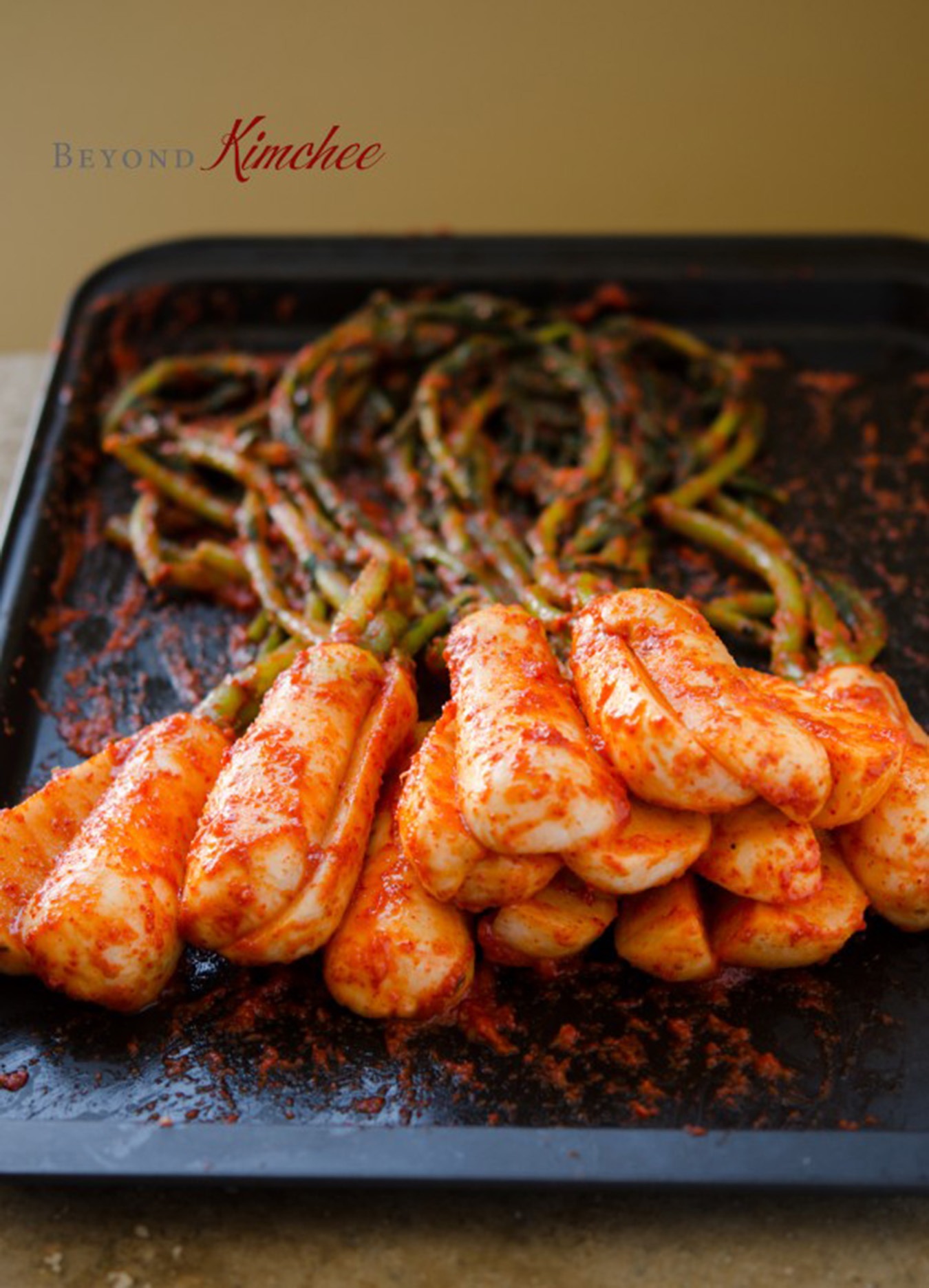
I often find that Koreans name their kimchi in a very honest way. This particular kimchi called, Bachelor Kimchi , is one of them. This ponytail radish kimchi is one of the popular kimchi, especially among women.
Chonggak means bachelor in Korean and this kimchi was named to honor the bachelors. You might wonder how these weird radish breed can honor the bachelors. Well, here’s the story.
Why is it named Bachelor Kimchi?
In the ancient days in Korea, single men (bachelors) had a very long braided hair. The shape of ponytail radish with their white radish part and the long leafy green part mimics the look of the braided hair of bachelors, so the kimchi was named after. When the single men gets married, they put their braided hair into a bun.
Although the original name for this kimchi is chonggak kimchi (총각김치), some people calls altari mu kimchi (알타리 무김치) instead. Altiari is the name for this particular Korean radish.
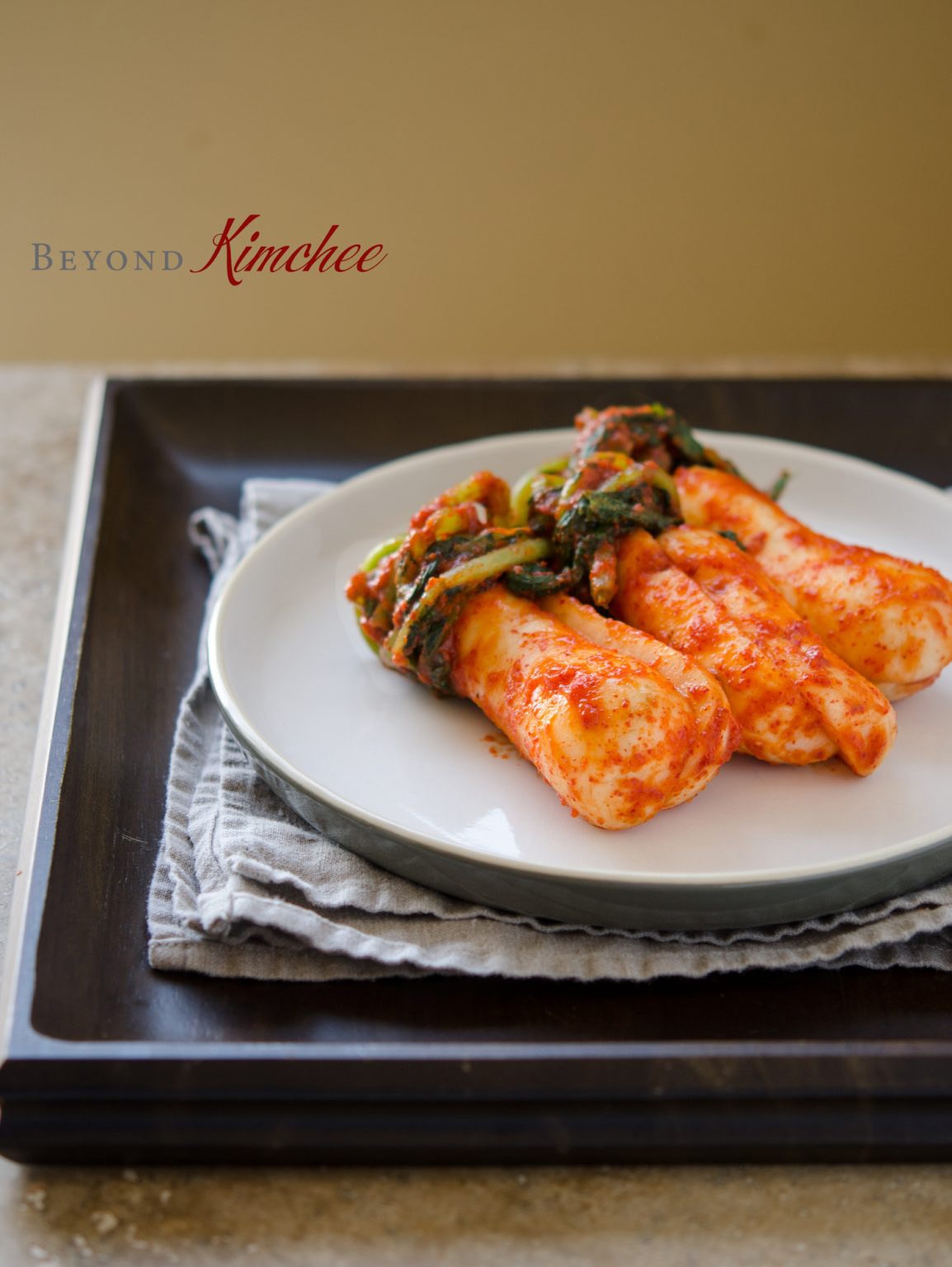
I have to say this is perhaps my favorite type of kimchi. It has a deep robust flavor when fully fermented and still holds the crunchy texture that is so irresistible to bite on.
Unlike napa cabbage kimchi, this radish kimchi is not ideal to eat when freshly made. After fermenting for a few days though, you will find the flavor and the texture to be quite addictive. I just can’t get enough.
Ponytail Radish
These adorable radishes are called “Altari Moo (알타리 무)”, the inspirational vegetable of our bachelor kimchi. You will find them in many Korean markets. I even found some in my local farmers market the other day.
How to make Bachelor Kimchi (Ponytail Radish Kimchi)
Step 1: Clean ponytail radish
Scrape off the dirty surface of radish. And let’s cut off the hideous pony tail on top of his head. Unless the skin of radish seems to dirty, you don’t need to peel.
Cut it in half or quarter lengthwise if the radishes are too big.
Step 2: Salt brine to radish
Sprinkle with coarse sea salt and let them sit for 2 hours, turning once or twice during that time.
Rinse them well and let them drain in a colander.
Step 3: Make Fish stock and rice paste
Meanwhile, make a fish stock by using dried pollock slices or anchovies. Reserve 3/4 cup + 2 tablespoon the stock and discard the fish.
Combine the 3/4 cup stock and 2 tablespoon of sweet rice flour. Let it cook over medium heat until thickens, stirring constantly. It should take about 2-3 minutes. Let cool.
You will only use 1/2 cup of this glue. Freeze the leftover for later use to make other kimchi.
Step 4: Kimchi seasoning paste
In a blender, puree the onion, garlic, ginger, apple, and 2 tablespoon of the fish stock until smooth.
In a mixing bowl, combine 1/2 cup of rice glue, 1/2 cup Korean chili flakes (gochugaru), onion garlic puree mixture, sugar, anchovy sauce
, and salted shrimp (saeujeot). Mix well and let it sit for 10 minutes to incorporate.
The time has come to assemble the bachelors…!
I used a baking sheet to do the job. Just smother the chili paste mixture onto the radishes until they fully and evenly coated. You might want to do this a small batches at a time to avoid overflowing.
How to ferment and store Korean Radish Kimchi
Put kimchi in an airtight container or glass jar and let them sit on the room temperature for 2 days, then transfer to the refrigerator and continue to ferment for 5 more days. They should be so ready to eat.
After a week of fermentation, your kimchi will be just perfect; crunch, robust, and full of bacteria! (I mean the probiotics, you know.)
This bachelor kimchi yields a slightly different flavor than most radish kimchi (Kkakdugi) that people are accustomed to, but this has to be the most beloved radish kimchi of all. Maybe because its name?
So you might wonder and ask;
“Then, are there kimchi called Bachelorette Kimchi?” Well, the answer is “No!”. I hope you get to enjoy these adorable bachelors on your Korean table someday.
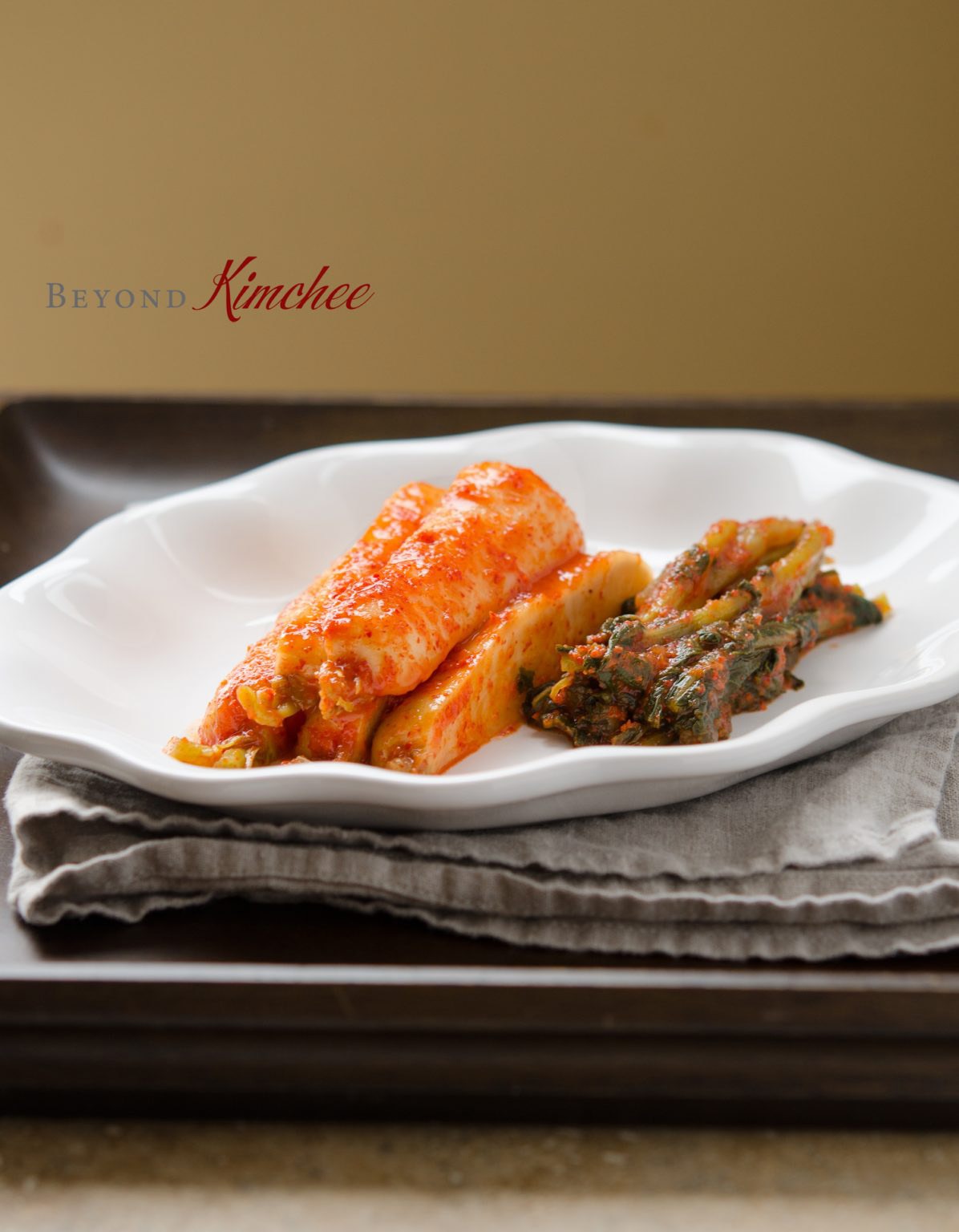

Bachelor Kimchi (Ponytail Radish Kimchi)
Ingredients
- 3 1/4 lb young radish bunches
- 1/2 cup Korean coarse sea salt
- 1 handful dried shredded pollock , or 5-6 dried large anchovies
- 2 tablespoon sweet rice flour (chapssal-garu)
- 2 cups water
- 1/2 medium onion, diced
- 1/2 apple, diced
- 4 cloves garlic
- 1/2 inch ginger
- 3 tablespoon Korean anchovy sauce
- 1 tablespoon Korean salted shrimp, optional
- 1 tablespoon sugar
- 1/2 cup Korean chili flakes (gochugaru)
Instructions
- Clean the radish by scraping off the dirty surface and cut off the tail. Keep the green leafy stem part is attached to the radish. Cut the white part of radish in half of quarter if they are too big. Rinse them well.
- In a large shallow bowl on in a kitchen sink, place the radishes and sprinkle with sea salt evenly all over. Let them soak for 2 hours, turning once or twice. When the radishes seem wilted and lifeless, rinse in a water a couple of times and drain in a colander. Let them sit while you are getting the filling ready.
- Meanwhile, in a small pot, combine dried pollock or anchovies with 2 cups of water and bring to boil, simmer for 5 minutes. Strain to reserve 3/4 cup + 2 tablespoon of stock. Discard the fish.
- In a small pot, combine 3/4 cup of reserved stock with 2 tablespoon of sweet rice flour. Bring them to med-high heat to boil and thicken, whisking constantly. This is the sweet rice paste (You will only use 1/2 cup of this paste). Let it cool.
- In a blender, combine onion, apple, garlic, ginger, salted shrimps (if using), with the reserve 2 tablespoon of fish stock. Puree them until very smooth. Transfer the mixture to a mixing bowl, add 1/2 cup of the reserved sweet rice glue, Korean chili flakes, anchovy sauce, and sugar. Mix well and let it sit for 10 minutes for the chili flakes to soften up.
- In a large shallow mixing bowl or a baking pan, place the radishes and smother with the chili mixture. You might need to do this in batches to avoid overflowing. Toss, rub and incorporate the chili mixture to evenly coat the radishes and its leafy stems.
- Store the radish kimchi in a airtight container and let it sit on the room temperature for 2 days first, then store in the refrigerator for 5 more days. Your bachelor kimchi should be ready to eat. (Toss the kimchi with the kimchi juice on the bottom)

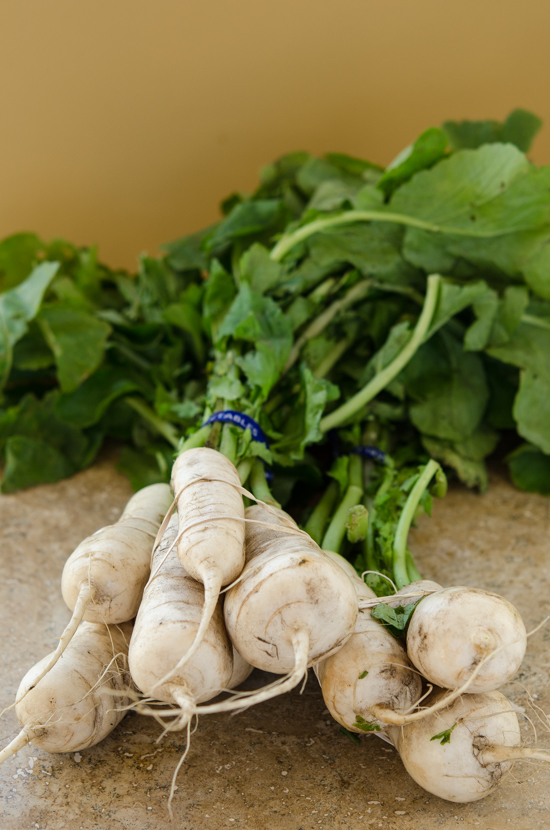
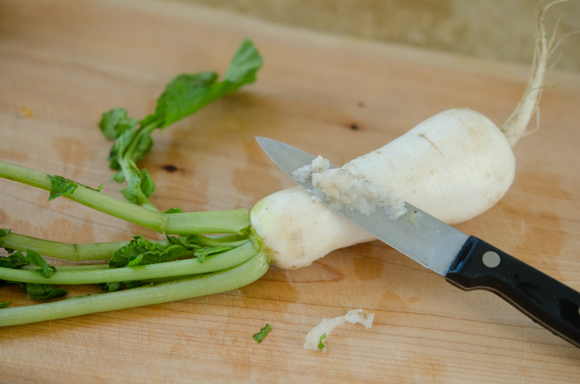
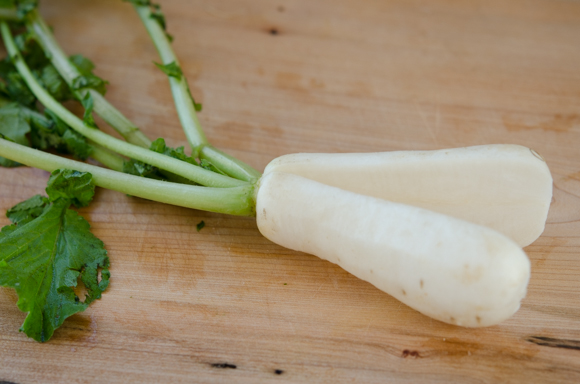
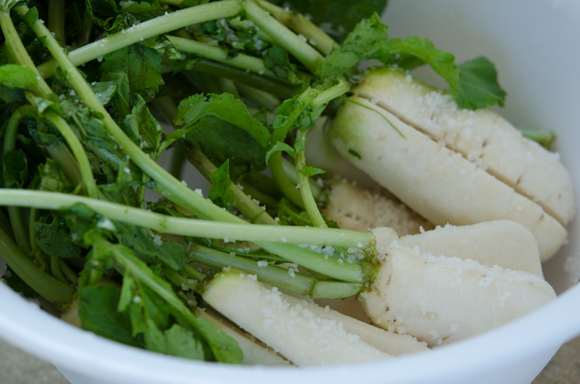
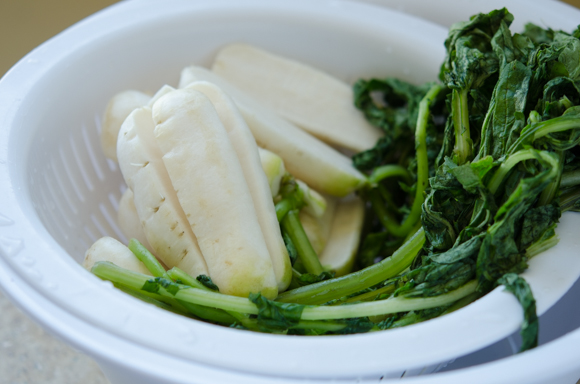
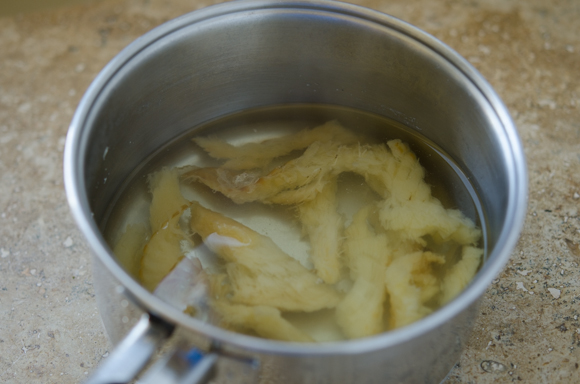
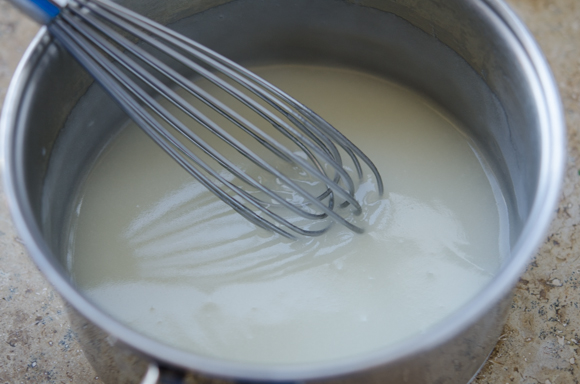
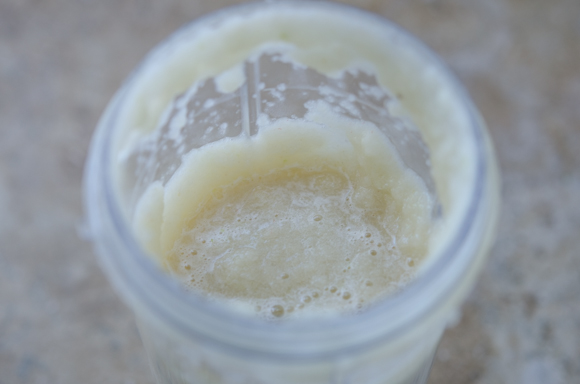
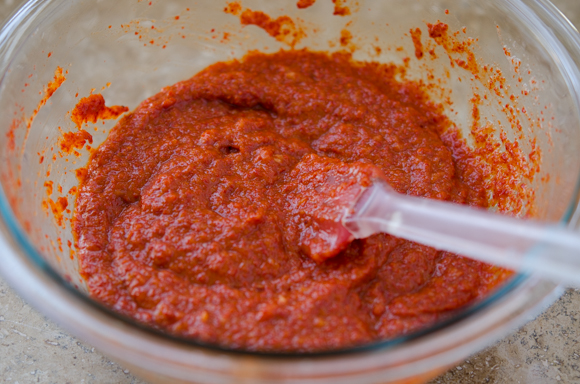
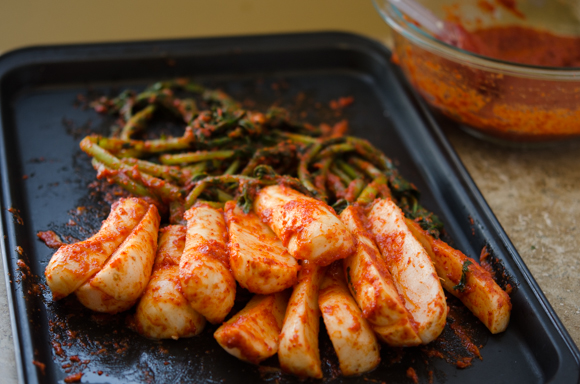
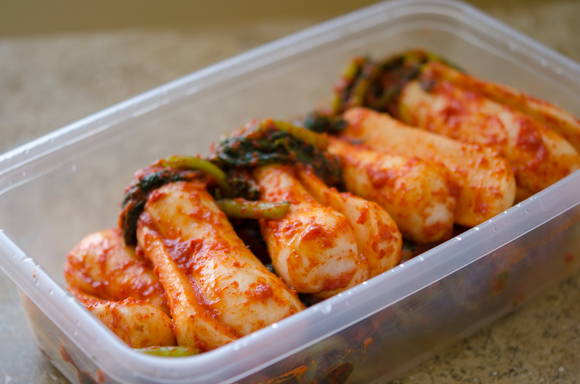

If you don’t have the dries fishes, what to substitute with?
You can leave them out and use plain water.
Nice job! Very descriptive! I just used this in my Biology class!
I love your artistic photos! You make this humble chonggak kimchi look good. My mother-in-law has a version here in Korean. It’s very homey and simple, but very good. She uses shrimp as she says that calcium inhibits the kimchi from getting sour too fast.
Thank you for the recipe. This is one of my favorites–it is most addictive–and I’ll enjoy making it.
안녕하세요~ 우연히 이 블로그를 찾았는데 유학생인 저에게 쉽고 유용한 레시피들이 많아서 너무 좋아요. holly 님과 가족들이 항상 건강하시고 행복하시길 바랄게요 🙂
Hi,
Can you substitute for any type of fish? I’ve seen other kimchi recipes that use ‘fish sauce’ as an ingredient, but what is fish sauce? I teach in Gambell Alaska and we have salmon runs plus the salmon I caught and canned in my pressure cooker. We also have halibut on another part of the island I can get a hold of. Would either one be compatible for the kimchi?
Hi Michelle
Korean fish sauce is made of anchovies. They are salted and fermented first, then extracted to liquid. I haven’t tried myself yet, but if you have access to fresh halibut, you can add the fresh halibut slices (well cleaned but with bone and the skin), in the kimchi and let it ferment together. It will bring a really good flavor.
Canning salmons sounds so interesting. I would love to know how.
Holly, I love the kimchi sauce with radish very much. And the name is really interesting!
this looks so good! is any type of apple ok?
Any sweet apple will work fine.
I love that name!! Ofcourse i don’t think I’ve ever seen those radishes here before but they look quite interesting. I’m gonna have a look in our Asian supermarket and see if they have anything like it. But maybe I should just start with making my own batch of kimchi first for the first time…:)
I think my Oh would adore this.
Dear Holly,
Thanks again for this recipe. I’ll try this one as well, if I can find these radishes at the farmers market. Your easy kimchi I’ve made different times (and I love it!) and last week I tried your water kimchi, which is also very good. I’m starting to understand how it works with kimchi.
I do prefer to follow your recipe thou, much better to look at the pictures in detail and can come and ask you questions.
You know what would be really helpful for someone like me who doesn’t have a lot of experience? I would be great to have a sort of template so you can adapt your recipes. Like I understand the napa kimchi neeed water and salt to soften the cabbage but green leaves kimchi requires only sprinkle salt. So it would be great to know the percentage of salt on weight of vegetables (or water in case of water solution); when do you use anchovy sauce, when do you use soy sauce for soup, when just salt. When do you use fresh fish, when dry, what kind of glue do you use.
Thanks again!
Francesca
Hi Francesca
I am glad to hear that my water kimchi turned our great for you.
I understand it is sometimes hard to understand what condiment goes better with what ingredient. There is no certain rules that you can’t use this with that in most Korean cooking. If the outcome is good, that’s what it meant to be. I like to use salt brine when I make cabbage kimchi, but many other Koreans use sprinkle of salt alone. I like to season my soups and vegetable salads with Korean soy sauce for soup for a little more kick in the flavor, but other Koreans prefer salt instead. It is all personal cooking preference, I think. All I can say is being creative with cooking is a great way to discover the flavor in any cuisine. However I will keep in mind of what you have suggested and think of some way to help people to approach Korean recipes with better understanding. Thanks for your suggestion!
I would love to make my own kimchi. I love radishes so might have to start with this one.
Looks delicious! My favorite kind of Kimchi!!
The name is actually describing the common hair style of bachelor (총각) as men also had long braided hair back then (till Chosun dynasty). Cutting hair was generally not allowed and considered as a punishment at that time (unless you become a monk). Men put their hair up to have “sangtoo” after marriage.
Again, man, they look so so delicious. I’m salivating as I’m typing!!
Another beautiful kimchi recipe (and I should know since I’ve looked at every kimchi recipe you have recently! :D). I only tried to make it once but it wasn’t successful at all. My wife made it and it was ok, but it’s not something we make much and I really miss it since you can’t buy it here.
I’m going to look at your “basic” recipe again with the cabbage and try to give it a try!
Fun recipe! I love radishes, but haven’t had them in kimchi. This looks so terrific! Thanks.
It leaves a wonderful imagination for me by its look and the special name!
thanks for sharing!
HAHA! What a straightforward name!! I haven`t tried this type of kimchi before. I love pickled kimchi, though!